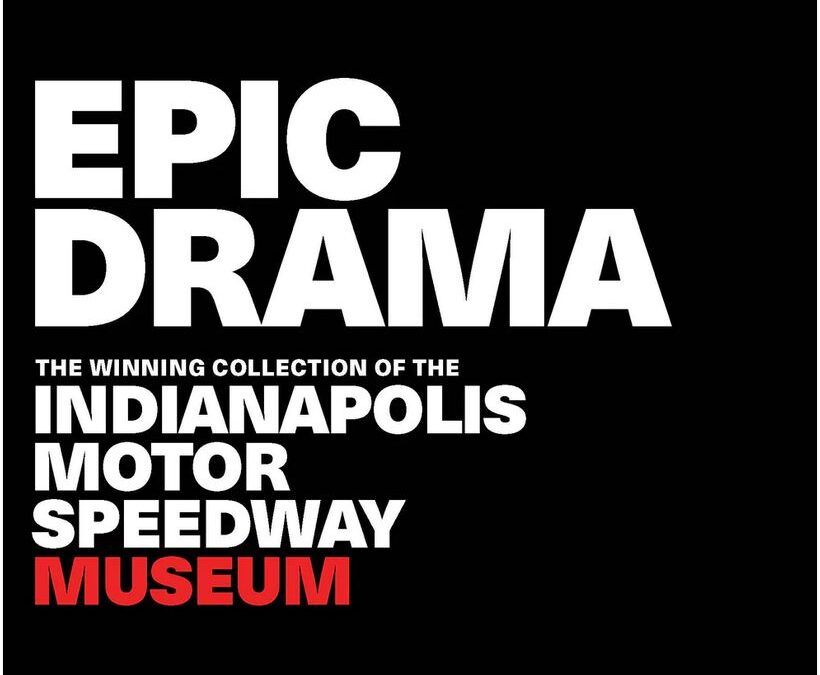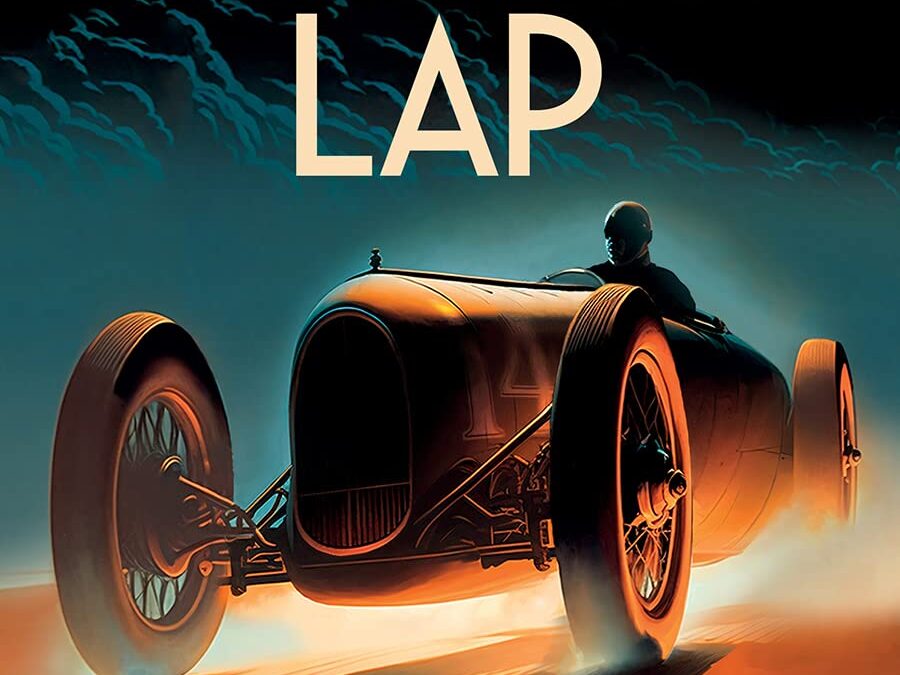
The Last Lap is a gripping inquest into the fast life and mysterious death of racing driver Pete Kreis, infamously killed in practice at the celebrated 1934 Indianapolis 500. In a compelling narrative that reads like a novel, author William Walker’s lifelong obsession with Kreis’s mysterious demise has created a rich story line that takes readers back to the glamorous and dangerous times that marked the beginning of automotive competition.
Much more than a motor racing story, The Last Lap is the tale of a boy who rises from the obscurity of back country Tennessee roads to compete in the world’s fastest and most celebrated races, and the parallel tragic collapse of a rich and powerful Southern family.
Piloting a front-drive race car in practice, Kreis crashed into the wall of Turn One, rode along the top of the retaining wall for seventy-five feet, and careened down an embankment at the south end of the oval. As the car smashed into a tree in the backyard of a nearby house, both men were killed. The next year, an impromptu “coroner’s jury” of Indy drivers and Speedway experts held an intense review of the accident, and they concluded that Kreis’s demise was “the strangest death in all racing history.”
Lifelong racing fan and acclaimed historical author, Walker’s (Betrayal at Little Gibraltar) search to solve the mystery surrounding Kreis’s death has spanned three-quarters of a century and too many miles to count. Walker’s fascination with the mysterious crash is driven by more than a love of racing–Kreis is a distant cousin. The dynamic, nonfiction narrative is the result of a decades long quest in search of the truth—the real story of Pete Kreis, his colorful racing career, and his tragic death.
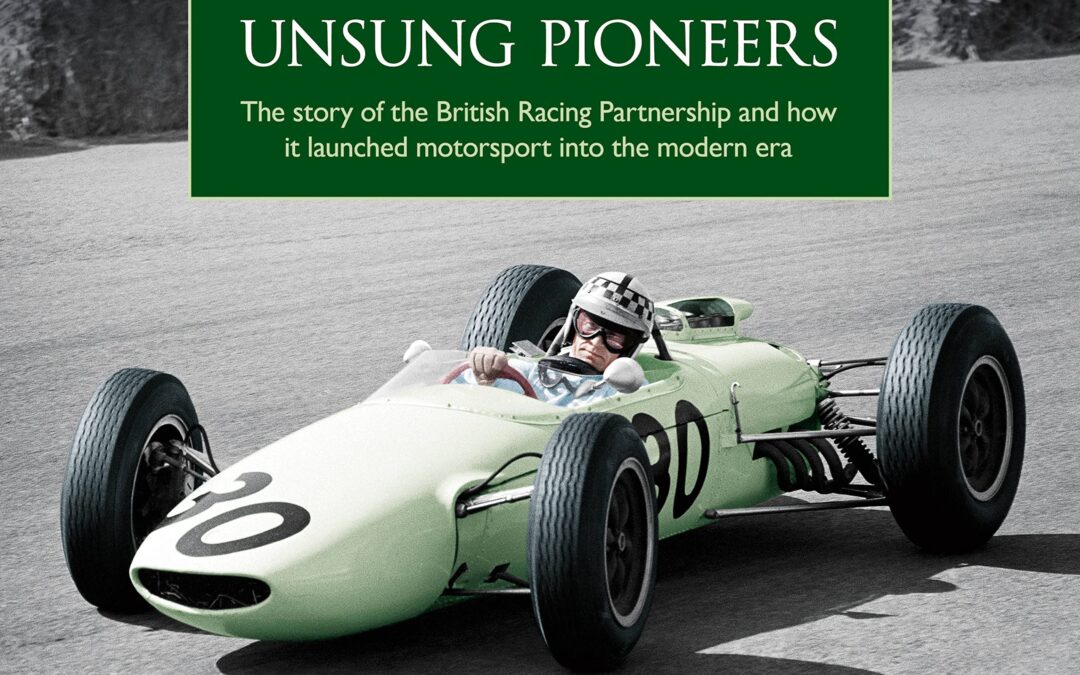
This is the previously untold story of a very special British racing team. The British Racing Partnership (BRP), which operated from 1958 to 1964, is best known for its association with Stirling Moss, who was driving a BRP-entered car at Goodwood on that fateful day in 1962 when a serious crash ended his career.
Less familiarly, BRP became the first fully sponsored team in Formula 1, partnering with Yeoman Credit, a go-ahead finance house, in an initiative that led to a transformation of the sport. Formula 1’s Unsung Pioneers tells the entire history of BRP in unprecedented detail, thanks to the author’s prodigious research and numerous interviews over the years with many leading participants, including Moss himself, team boss Ken Gregory, top driver Tony Brooks, chief mechanic Tony Robinson and many others.
- Formation of the team in 1958 by Stirling Moss’s father, Alfred, and his manager, Ken Gregory, running rear-engined Coopers in F1 and F2.
- Arrival of sponsorship by Yeoman Credit in the autumn of 1959, a year that saw Stirling Moss finish second in the team’s BRM at the British Grand Prix.
- The tragic 1960 season brought the deaths of three BRP drivers — Harry Schell, Chris Bristow and Ivor Bueb — in the space of three months, but racing activities widened to include Lotus sports cars.
- A different finance house, United Dominions Trust, became the sponsor for 1961, when Moss won many non-championship Formula 1 and sports car races for the newly named UDT-Laystall team.
- The 1962 season began badly with Moss’s Goodwood crash but peaked at that same circuit with Innes Ireland’s Tourist Trophy victory driving a BRP-run Ferrari 250 GTO.
- In response to the ground-breaking Lotus 25 with its monocoque chassis, BRP in 1963 built its own car for the first time, a BRM-powered F1 design also with a monocoque.
- The last F1 season, 1964, brought one final non-championship F1 victory for the team, achieved by Innes Ireland at Snetterton.
- BRP cars at Indy: an epilogue to the team’s story saw two cars built for the 1965 Indianapolis 500.
Lavishly produced and illustrated with 350 period photographs, this book will be treasured by all motorsport enthusiasts.
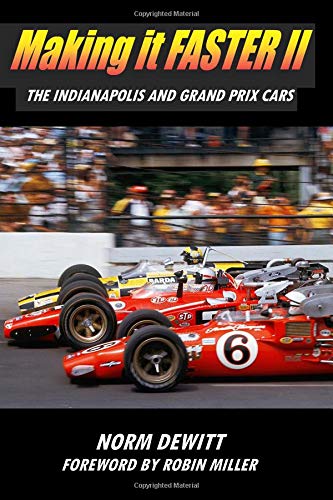
Making it FASTER II, The Indianapolis and Grand Prix Cars is the sequel to the #1 best selling book, Making it FASTER, Tales from the Endless Search for Speed. These are the stories of discovery by three generations of racers and designers who changed the state of the art forever. Tales of clever tricks and rule book manipulation in the ever-escalating contest between rule makers and loophole seekers, told by those directly involved in Indianapolis and Grand Prix racing. Their innovations dazzled us all.
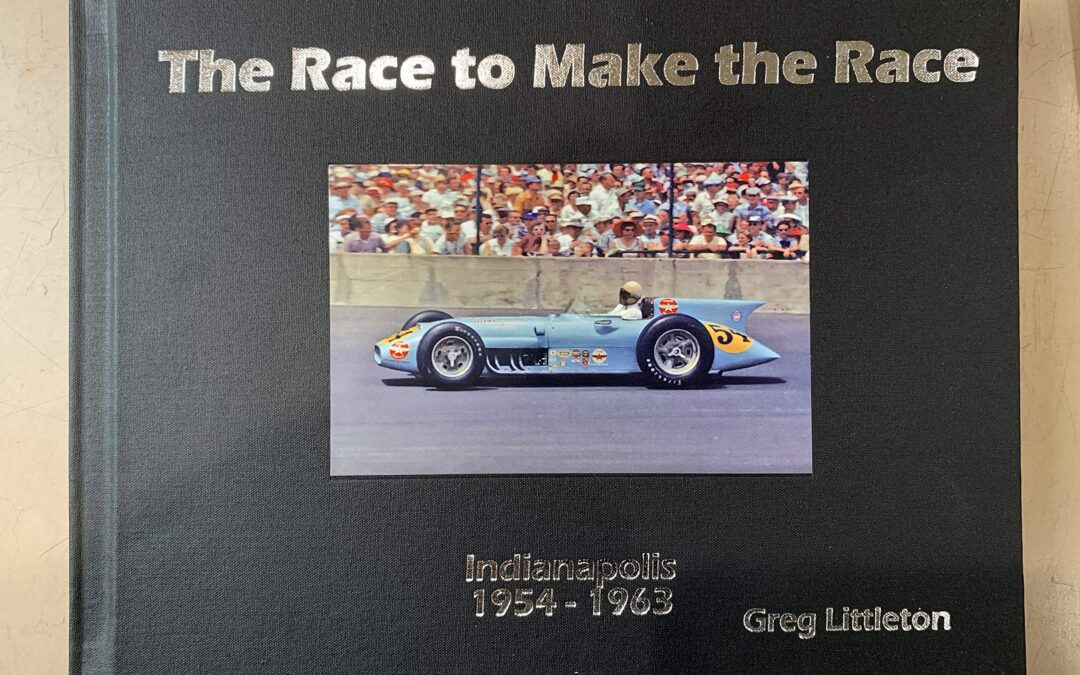
SIGNED
In his new book “The Race to Make the Race” Littleton chronicles a 10-year span (1954-1963) which was the peak roadster years at Indy and records what went on for every qualification attempt during this time period and each lap speed even if the attempt was yellow flagged. There is no mention of the races themselves as those results have been well-documented over the years.
Today’s 500 is lucky to attract 33 cars some years, but there was a time when the 500 really did have an actual Month of May and sometimes more cars went home than made the starting fields. Littleton’s book records by the actual time of day, weather conditions, attendance and all of the other happenings both on the track and in the Garage Area.
There are a lot of details in the book that you will never see anywhere else today. During the years in question the drama around the efforts to find speed just to qualify were often nearly as interesting as the actual race.
“While I was doing the Roadsters book I got the idea about doing a book on qualifications for the Indy 500,” said Littleton. “I got some qualifying information from the Speedway records when I was doing my first book. It was fun to do. I wanted to give the story on the successes and struggles each driver went through to try and make the Indianapolis 500 those years. The Bartholomew County Library was a big help in assisting me. They were able to get the microfilms from the Indiana State Library. I probably made 75 trips down to the local library to gather the information I needed.”
Littleton also mentioned two of the area’s standout racers at Indianapolis. Larry Crockett of Columbus who was the fastest rookie qualifier in 1954 and in the 500-mile race that year he ended up being the top finishing rookie over Pat O’Connor of North Vernon.
Littleton said Crockett, who died in a racing accident in Pennsylvania in 1955 right before he would have attempted to make his second Indianapolis 500, would have been a candidate to win the Indy 500.
“He was so young when he was starting out,” he said. “Nobody knows how his career would have turned out. If he had three or four years on him then I could have given you a better estimate on him. He was fast enough. There were some brave souls in 1954 and they said Larry Crockett was the best young driver in the United States.”
Like Crockett, Littleton gave his assessment on O’Connor who was killed in a first-lap accident in the 1958 race if he too could have won the Indy 500.
“Pat O’Connor definitely could have been an Indy 500 champion,” he said. “The legend of Pat O’Connor just keeps growing around here. You talk to guys and there is no doubt he was a natural. He was so smooth; everything came easy for him. He had the right head for it. He knew the days the car was good enough and the days it wasn’t.”
In documenting every lap of time trials during the 10-year span he chronicled there was one driver that stood out when writing the book was a young driver named Bob Scott in 1954.
“He had a good car in ’54 and on the fourth and final day of qualifying he was not in the show yet,” Littleton explains. “He jumped into a car that was not considered top-of-the-line equipment. He put three good laps together and they were going to be good enough to put him in the race, all he needed was one more consistent lap and he was in, but before he took the checkered flag he pulled into the pits and thus he didn’t qualify for the starting field. He apparently didn’t look at the flagman. He never did say why he pulled off.”
If Littleton had to pick a Mount Rushmore of Indy 500 champions his list would include: Bill Vukovich, A.J. Foyt, Wilbur Shaw and Al Unser Sr. Littleton also gave mention to 1963 winner Parnelli Jones.
“He was probably the least successful great race driver,” he said. “He would consistently beat Foyt in sprint cars, but he only won Indy once.”
On the sale last month of the Indianapolis Motor Speedway to Roger Penske, Littleton had this to say.
“Who else cares enough about racing and has the business acumen than Roger Penske?,” he asked. “He has everything that can make it work. Every decision he makes you may not like, but he has the best interest of the speedway in mind.”
Penske becomes the fourth owner of the track. The Hulman family had owned the track for 74 years.

2nd Edition
This officially licensed 120th anniversary edition of Indian Motorcycle tells the complete story of Indian Motorcycle, America’s first mass-produced motorcycle maker, from its start as a bicycle manufacturer to the purchase of the brand by Polaris Industries in 2011 and the subsequent new Indian motorcycles—updated to include new photography, the story of the latest models, including the FTR1200, Chieftain, Challenger, and Roadmaster, and Indian Motorcycle’s return to racing.
In the early years of the 20th century, Indian Motorcycle dominated the world’s racetracks and showrooms, earning the brand a worldwide reputation for quality, performance, reliability, and technical innovation with such classic machines as the Chief, Scout and Four. But the once-mighty company fell on hard times and in 1953 was forced to file bankruptcy.
The Indian Motorcycle brand never quite died, however, thanks in large part to fanatically devoted enthusiasts, who tried to resurrect it for over half a century. Finally, Polaris, maker of the highly regarded Victory brand of motorcycles, purchased the brand and released the Chief and Scout, models that once again restored Indian Motorcycle to its rightful place in the motorcycle pantheon.
Indian Motorcycle is the most complete and up-to-date history of this classic American motorcycle.
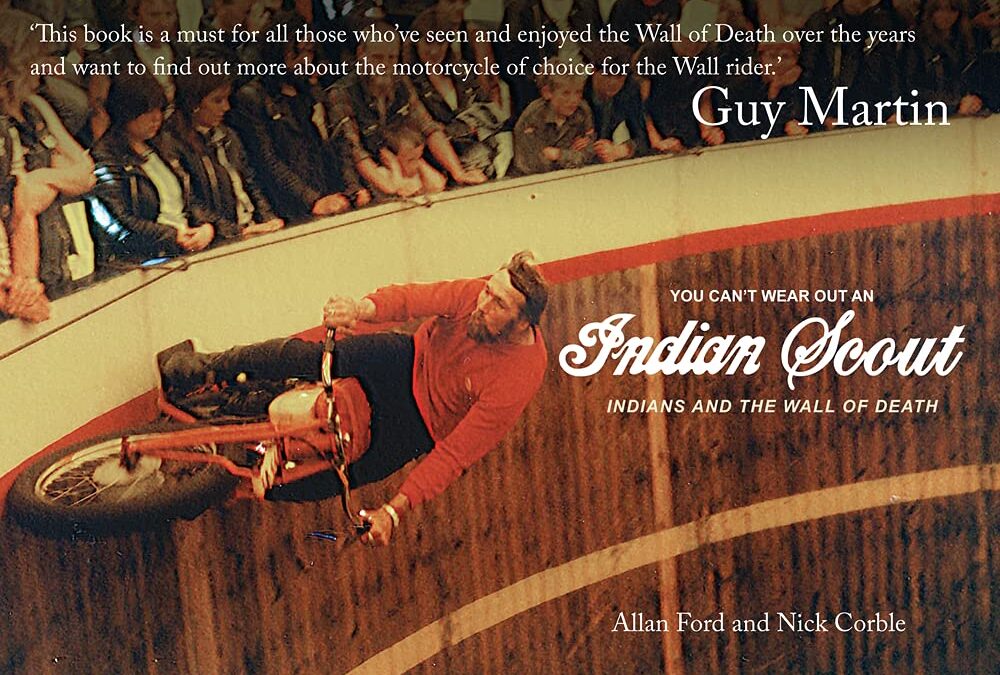
The Indian Scout motorcycle is the favoured mount for Wall of Death riders all over the world. Drawing upon modern and archive material, Wall of Death owner and rider Allan Ford and author Nick Corble explore the reasons behind this relationship and bring the story of the Wall up to date, including behind the scene details of the latest Wall of Death speed record achieved by Guy Martin. It’s a story that spans more than a century, starting with experiments with motorised bicycles in the 1890s, passing through two world wars and ending by looking to a future where Indians continue to be restored and ridden on the Wall. As this book makes clear, the relationship between Indians and the Wall of Death is one that will never be broken. As Sammy Pierce, at one time the world’s largest Indian motorcycle dealer once put it:You can’t wear out an Indian Scout,Or its brother the Indian Chief.They’re built like rocks to stand hard knocks,It’s the Harleys that cause the grief.

After building his first race cars out of southern Louisiana junkyards, Bob Riley quickly established himself as a leading light, if not genius, when it came to race car design. His first major suspension design helped Henry Ford II make good on his vendetta to beat Enzo Ferrari at Le Mans. Riley’s first radical Indy car designs with its ingenious center hub mounted suspension resulted in A.J. Foyt’s landmark fourth victory at the Indianapolis 500 in 1977. Since then, Riley has continued to be at the heart of the world of motorsports, working with its most famous drivers at the biggest events, including the Daytona 500, where his engineering helped Dale Earnhardt finally win NASCAR’s marquee event.
Americans love the “genius” angle like everyone else. They love winners. Sports stars are overtaking Hollywood these days in popularity. Racing readers are a small but predictable group and suspect the generation familiar with Bob’s exploits at Indy would be keen on a book like this. They’re the same age group pumping up the vintage magazine market and the collectible car market.

Indian Motorcycle(R): America’s First Motorcycle Company(tm) tells the complete story of Indian, America’s first mass-produced motorcycle maker, from its start as a bicycle manufacturer to the purchase of the brand by Polaris Industries in 2011 and the subsequent new Indian motorcycles. In the early years of the 20th century, Indian dominated the world’s racetracks, earning the brand a worldwide reputation for quality, performance, reliability, and technical innovation, but the once-mighty company fell on hard times and in 1953 was forced to file bankruptcy.
The Indian brand never quite died, though, thanks in large part to fanatically devoted enthusiasts, who tried to resurrect it for over half a century. Finally Polaris, maker of the highly regarded Victory(R) brand of motorcycles, purchased the brand and released the Chief(R) and Scout(R), models that once again restored Indian to its rightful place in the motorcycle pantheon.

In a nation that worships the automobile for the freedom, style, and status that it confers, the Indianapolis 500, run on or near Memorial Day eighty-seven times, is an annual rite of passage celebrating Americans’ love affair with speed. Indy recounts the drivers (677 men and 3 women) who have gone to Indianapolis in the past ninety-five years to live their dreams, staking their lives on the outcome. It highlights the faces in the crowd: hardworking Americans, tinhorn celebrities, hookers, movie stars, gate-crashers, and five American presidents. Terry Reed focuses his narrative on the track’s four quarter-mile-long turns, each the site of triumphs (including those of such multiple winners as Billy Vukovich, A. J. Foyt, and Helio Castroneves); grisly deaths (at least sixty-six, including three unrelated men of the same unusual last name who died in the same turn but in different decades); and bizarre heroics (like the sans souci French driver who downed champagne throughout the 1913 Indy 500 and still won). Reed also examines Indy’s confluence of racing and aeronautics (World War I flying ace Eddie Rickenbacker once owned the track) and the impact upon the event of such forces as segregation, gender politics, food, fads, publicity stunts, world-class partying, and tasteless pop culture. Indy takes readers on an entertaining, full-throttle ride through the history of one of the world’s most famous races and one of America’s most hallowed rituals. It is the definitive account of the crown jewel of American motor
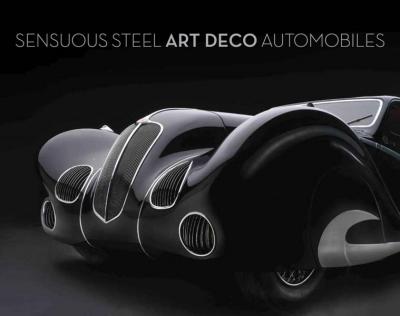
CURRENTLY SOLD OUT – AWAITING PUBLISHER RE=PRINT
This book was published to accompany an exhibit of Art Deco-styled cars shown at the Frist Center for the Visual Arts in Nashville, Tennessee, from June 14 through September 15, 2013. All 20+ cars and motorcycles that were selected for the exhibit are presented here through the studio photography of Peter Harholdt and printed to the highest standard on extra-heavy paper stock.
Exhibition curator Ken Gross, along with fellow automotive historians Richard Adatto and Jonathan A. Stein, provide historical information about these unique cars, and art and architecture expert Thomas Mellins adds a fascinating essay about the emergence of Art Deco as a recognized style of expression. Includes:
Frank Lloyd Wright’s Cord L-29 Cabriolet
Two Figoni and Falaschi-bodied Delahayes
Jordan Model Z Speedway Ace
Pierce-Arrow Silver Arrow
Edsel Ford’s Model 40 Speedster
Voisin Type C27 Aerosport Coupe
Stout Scarab
Indian and Henderson motorcycles
Chrysler Airflow and Thunderbolt concept
Talbot-Lago T-150-C-SS Teardrop Coupe
The Bugatti Type 57C formerly owned by the shah of Iran, and many more
Hardcover | 12 x 9.5 | 112 pages
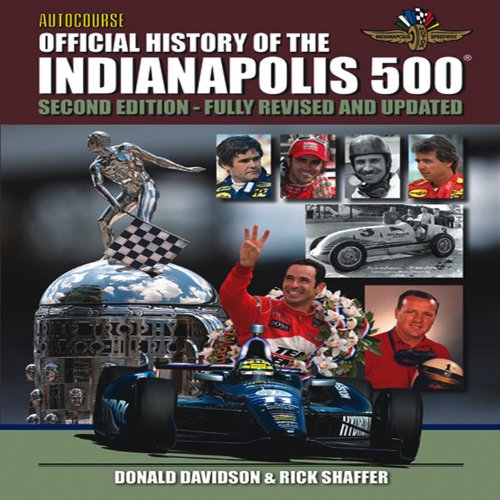
THE Indianapolis “500” is much more than merely the best known automobile race in the world. It is a cherished time-honored institution with a glorious history dating back more than one hundred years.
Known to most as, quite simply, “The 500,” it has been held every year since 1911, the only exceptions being 1917-18 and 1942-45, during the periods when America was involved in the two world wars.
Steeped in tradition, it has meant many things to many people and has played an enormous role in the lives of human beings, perhaps even more so for the spectators and devotees than for the participants themselves.
For over half a century, Memorial Day meant either trekking to the track or else ensuring that whatever other activity was planned for the day, a radio would always be within earshot. In more recent decades, settling down in front of the television has been added to the equation, while it is now the Sunday of Memorial Day weekend on which the extravaganza takes place, rather than on Memorial Day itself. But the feeling is the same.
For the participants, it has been a nearly 100-year saga of dreams, innovation, ingenuity, bravery, triumph, and tragedy. Paupers became millionaires, young men from small towns and broken homes became international celebrities, and regrettably, some of them gave their lives.
The “500” has endured world wars, depressions, recessions, political strife, and negative journalism, and yet it continues to draw massive passionate and emotional crowds, whose loyalty is rewarded with never-to-be-forgotten moments such as the finishes of 2006 and 2011, when Dan Wheldon snatched victory on literally the final turn.
This, then, is the story of the Indianapolis 500 and how it came to be. This is the story of more than 100 editions of the race, interspersed with a look at some of the compelling personalities, some little-known facts, an attempt to document the origins of some of the traditions, and perhaps even to dispel a few myths.
From Harroun to Franchitti, it’s all here…
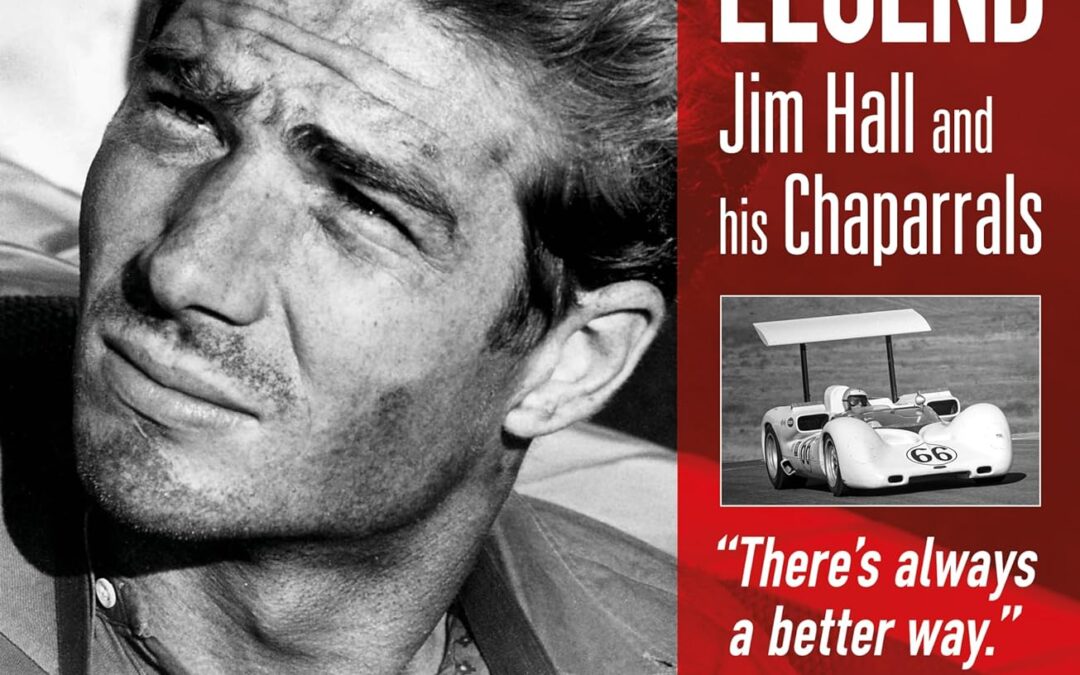
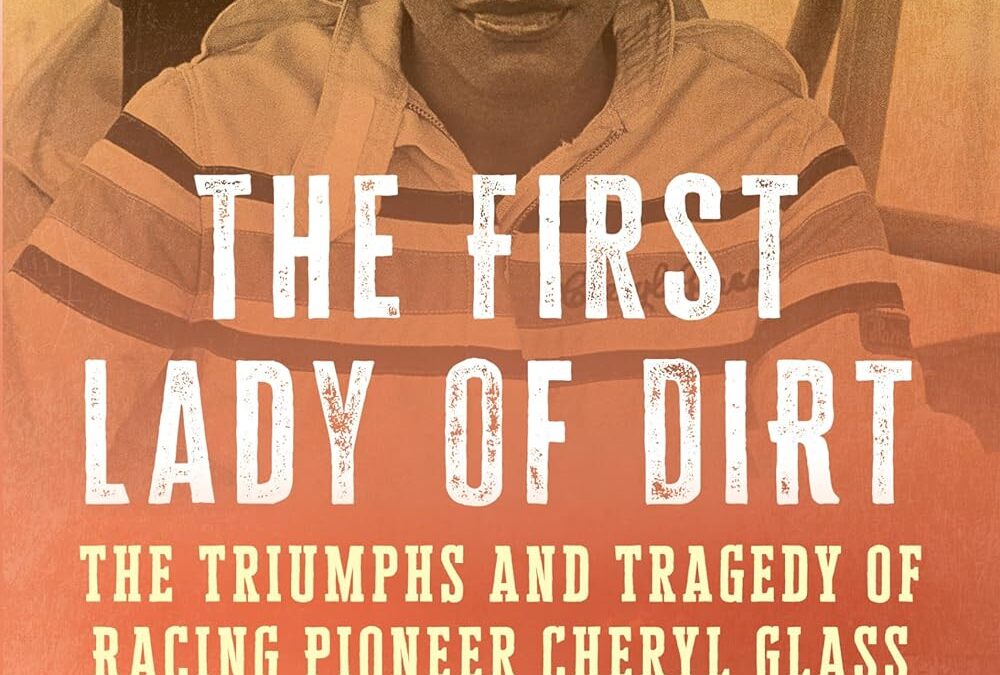
The incredible, little-known story of the first successful Black woman in the sport of auto racing in the United States.
Early in her career, Cheryl Glass looked like a lock to become the first Black woman to compete in the Indianapolis 500. From racing quarter midget cars at ten years old to Indy Lights in her twenties, Cheryl was on her way towards a winning career in auto racing.
In The First Lady of Dirt: The Triumphs and Tragedy of Racing Pioneer Cheryl Glass, Bill Poehler tells Cheryl’s full story for the first time. He recounts how Cheryl rapidly became the first successful Black woman in the sport, yet frequently encountered racist and sexist taunts from other drivers and fans throughout her career. While appearing to have it all—talent, ambition, looks—she faced many challenges on and off the track and her life soon spun out of control.
Featuring exclusive interviews with Cheryl’s mother, friends, and competitors, The First Lady of Dirt takes you behind the scenes and in the driver’s seat of Cheryl’s life. Poehler, an amateur racer himself, places the reader at the track, smelling the dirt and fumes, hearing the roaring engines and crashing metal, and feeling Cheryl’s joy and pain. It’s the inspiring story of a racing pioneer and a tragic tale of the pressures that are often hidden from public view until it’s too late.
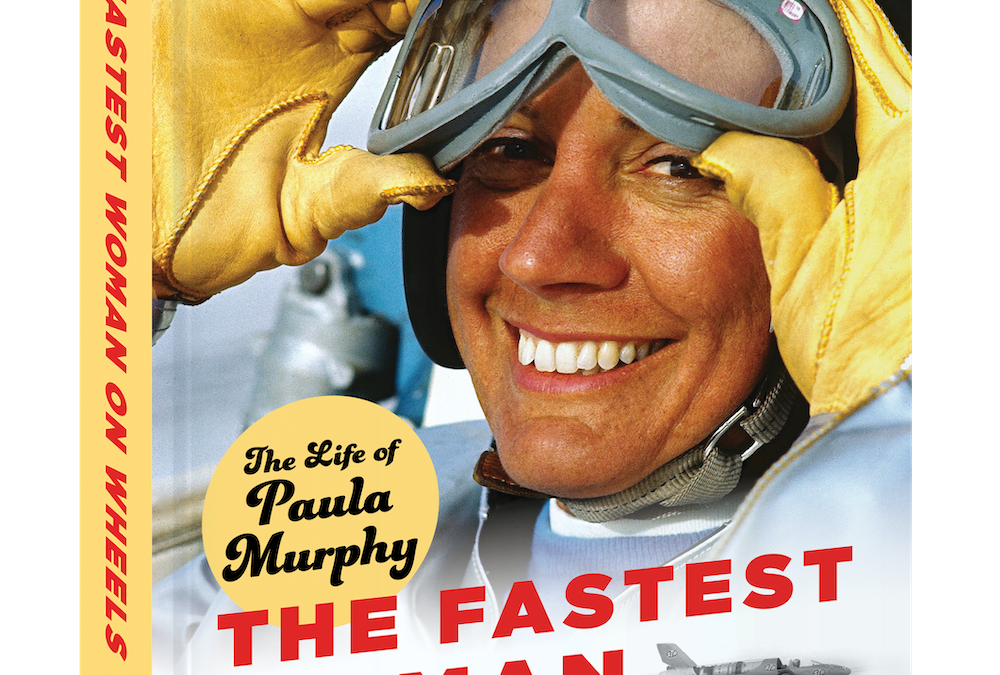
A fearless pioneer and a versatile and gifted driver, Paula Murphy was the first woman to pilot a jet car to a Bonneville Salt Flats speed record, the first woman to make laps at famed Indianapolis Motor Speedway, and the first woman to secure an NHRA Funny Car license. Throw in driving a Pontiac Sunbird literally around the world, nearly dying at the helm of a rocket car, and scoring closed-course speed records at NASCAR’s famed Talladega Superspeedway behind the wheel of cars driven by both Richard Petty and Fred Lorenzen, and you might be starting to scratch the surface of her incredible life.
Author Erik Arneson worked directly with Murphy and some of the biggest names in motor sports to dive deep into her story and relay to the world the impact this single mother from Ohio had on the world of racing. If you find the list of feats above impressive, add the Baja 1000, Mobil Economy Runs, Monaco, Union/Pure Oil Performance Trials, as well as high-speed stunts on horses, sailboats and a snowmobile and you’re starting to get close. Jump in—The Fastest Woman on Wheels is one hell of a ride.
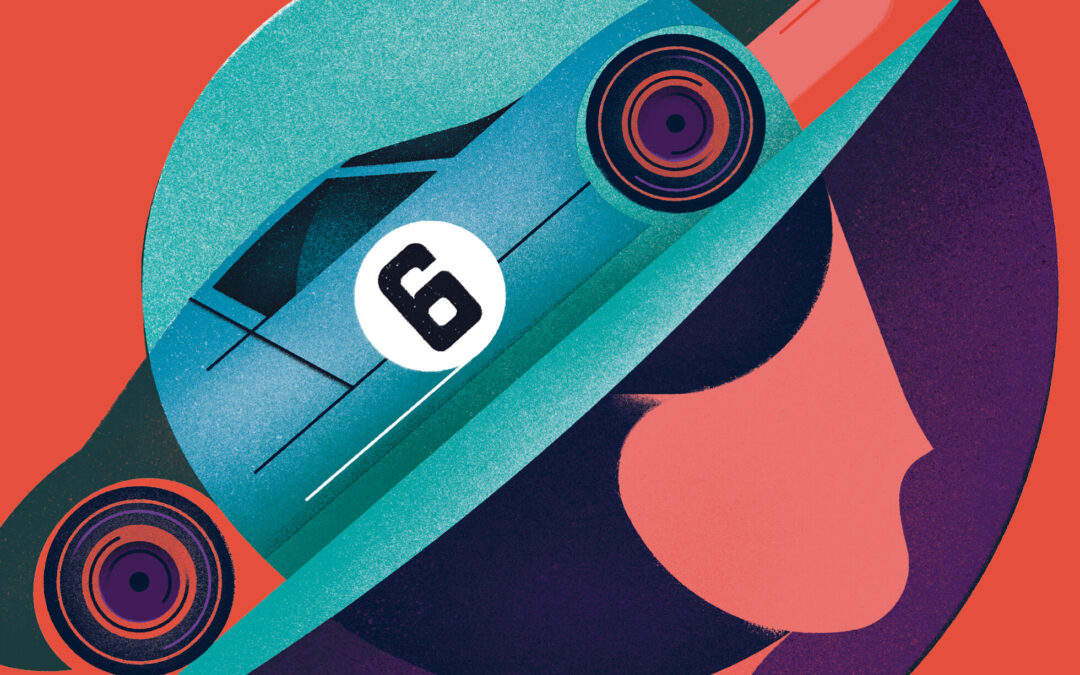
Concours Year 2023: The only book to record every class and Best in Show Winner from over 50 of the greatest global concours of 2023.
Now in its fifth edition, The Concours Year, presented by Weathertech, is a celebration of the greatest Concours d’Elegance events from around the world. The book includes Special Awards, Best in Class and Best in Show results from more than 50 concours. The Concours Year is the most comprehensive review of the concours scene published. Nearly 300 pages, hardbound and with more than 1000 images of some of the world’s most important cars, this is a book to treasure.
A Year in Concours: The very best of 2023
- Class and Best in Show Winners from Concours events in 2023
- Concept Lawn
- Concours People: The Entrant – Fritz Burkard; The Judge – David Lillywhite; The Restorer – Clark & Carter; The Organiser – Byron DeFoor
- Highlights and Trends of 2023
- Concept Lawn (new concept cars shown at concours events throughout the year)
- Looking Ahead to 2024
- The India Experience – a behind the scene look at the 21 Gun Salute Concours d’Elegance in Delhi
- Concours Judging Rules Explained – a judging rules deep-dive written by the experienced judge Chris Kramer.
Also introducing the inaugural Concours Year Awards.
And documenting Class and Best of Show results from the following Concours:
Cavallino Classic Middle East, 21 Gun Salute, Cavallino Classic Palm Beach, Concours in the Hills, Intermarque Concours d’Elegance, The Amelia, Sydney Harbour Concours, La Jolla Concours, Motorcar Cavalcade, Lugano Elegance, Cavallino Classic Modena, Concorso d’Eleganza Villa d’Este, Concours on Savile Row, Valetta Concours, Greenwich Concours d’Elegance, London Concours, Cincinnati Concours d’Elegance, Concours d’Elegance Suisse, Dinard Elegance, Rodeo Drive Concours, Philadelphia Concours d’Elegance, Poltu Quatu Classic, Heveningham Concours, Cartier Style et Luxe (Festival of Speed), Zurich Classic Car Award (ZCCA), Quail, A Motorsports Gathering, Pebble Beach Concours d’Elegance, Misselwood Concours d’Elegance, San Marino Motor Classic, Salon Privé, Classic-Gala Schwetzingen, Concours of Elegance Hampton Court, Radnor Hunt Concours d’Elegance, Concours d’Elegance Tegernsee, Antwerp Concours d’Elegance, Cobble Beach Concours d’Elegance, Ironstone, Detroit Concours, St Michaels, Ascona Concours d’Elegance, The Boston Cup, Audrain Newport Concours and much more!

A New Kind of Travelogue
Take an unusual, sometimes spooky, but always fun trip through the Golden State with this little travel companion—perfect for toting on an impromptu road trip or long-planned vacation. Visit the haunted Star of India and USS Hornet. Find out who is really living in a mysterious ghost town and wandering the halls of the “stateliest ship afloat.” Experience the electrifying ghosts of Universal Studios and the invisible inmates who forever roam “the Rock.” Ten popular and easy-to-access locations will show readers what a dark vacation is all about. From Alcatraz to the Calico Mountains to San Diego’s Old Town, California is a haunted paradise ready for you to explore . . . if you dare!
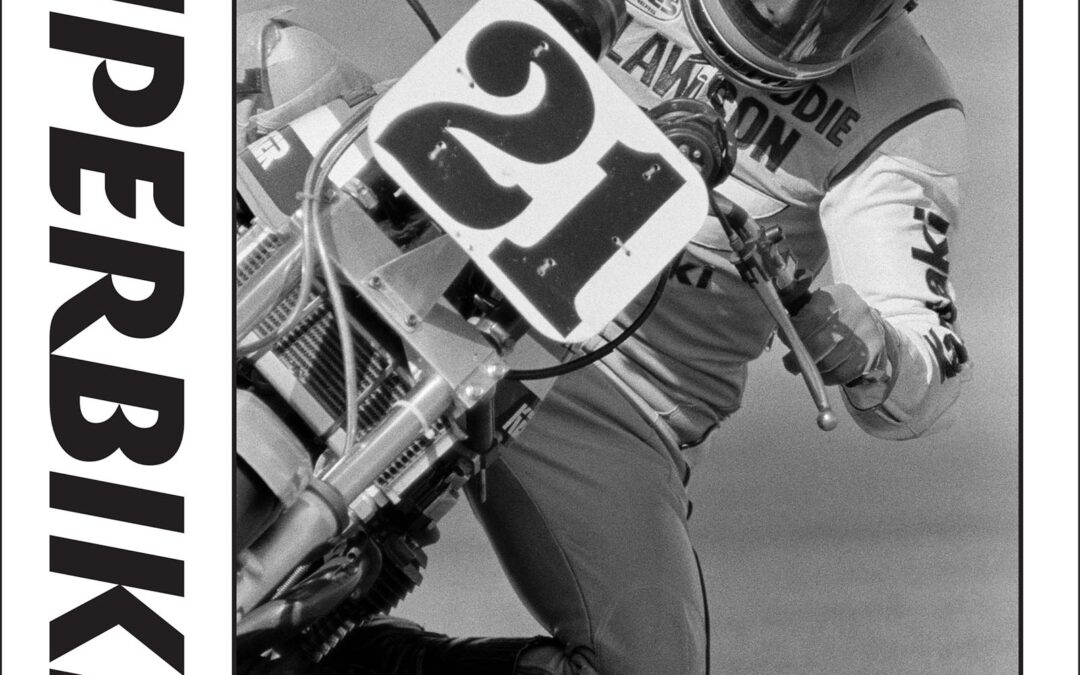
Superbike racing is a global business built on decades of dedicated partnerships among manufacturers, promoters and teams resulting in successful domestic and international championships. In the mid-1970s, however, this popular category of production-based four-stroke competition was in its infancy.
In “Superbike: An Illustrated Early History,” renowned technical writer Kevin Cameron and
acclaimed photographer John Owens chronicle the transition from the twin-cylinder BMWs,
Ducatis and Moto Guzzis set against wobbling and weaving first-generation Japanese fours to a
second wave of more raceworthy machines that ultimately led to the sportbike revolution.
Owens shot the black-and-white photographs published in this beautifully designed and
produced 192-page hardcover book at five of the tracks that dotted the U.S. motorcycle
road-racing landscape at the time: Daytona International Speedway, Bryar Motorsports Park,
Laguna Seca Raceway, Pocono International Raceway and Road America.
Eddie Lawson, Wayne Rainey and Freddie Spencer—three Americans who went on to win a
combined 10 250cc and 500cc Grand Prix world titles—figured prominently in the “sit-up” era of
AMA Superbike. Throughout the book, Cameron and Owens provide insights and images of
riders, crew members and machines difficult to replicate in today’s veiled paddocks.
“The desire to go fast, brake, turn and accelerate isn’t that complicated,” Cameron writes in the
opening pages. Yet this book clearly illustrates and uniquely explains the challenges that all
involved—from the manufacturers, to the teams and, ultimately, to the riders—faced in their
attempts to achieve those goals.
ABOUT THE AUTHORS
Kevin Cameron is a former tuner specializing in racing two-strokes and is widely recognized for
his ability to reduce deeply technical subjects to their elemental form. Kevin has written for
numerous publications. He has also authored several books on engineering and performance.
John Owens has photographed automotive and motorcycle competitions since 1975. John has
covered a range of events in the U.S., Europe and Japan, including the 24 Hours of Le Mans,
Indianapolis 500 and Daytona 500, as well as the Isle of Man Tourist Trophy races.
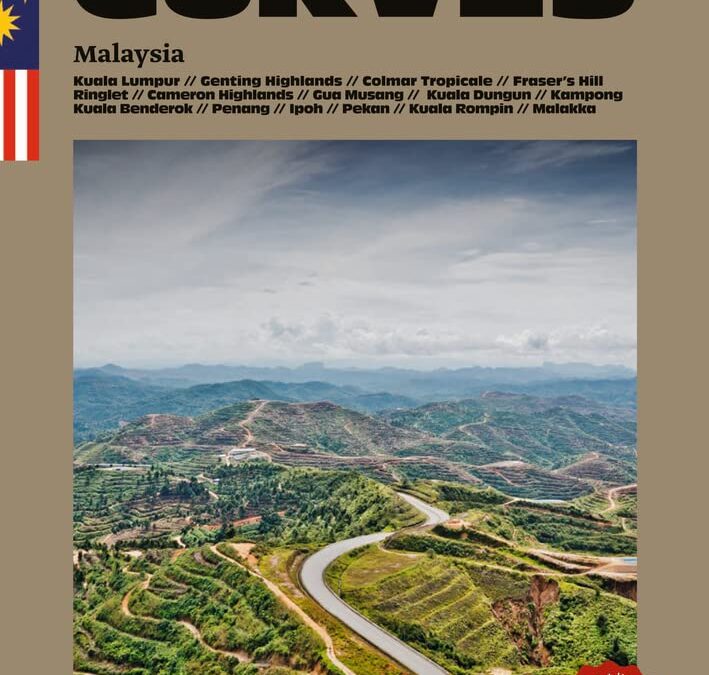
Soulful Driving in Malaysia.
The Thailand edition revealed that CURVES has a passion for Southeast Asia. With this limited special edition, Stefan Bogner now heads to Malaysia. Immerse yourself in the colorful whirl of life, the diversity and exoticism of Southeast Asian cultures, the friendliness of the people, the food and the landscapes.
But if you thought this country consisted only of beautiful beaches, turbulent cities and dense jungle, you need to be proven wrong: The islands and peninsulas between the Indian Ocean and the Pacific Ocean are excellent places to drive! Winding roads lead up into the mountains of the interior or palm-fringed along the coasts, swirling through the country as less frequented and often well-maintained driving pleasure hunters.
- Route suggestions for smaller and larger trips
- Tips on restaurants and accommodation along the way
- Includes map for planning your own road trip and for when you are on the road
So, buckle up, open all your senses, start your engines. Join us on breath-taking tours between the east coast and west coast – into a world of lush greenery, dripping jungle, foreign cultures, adventures and experiences.
Text in English and German.
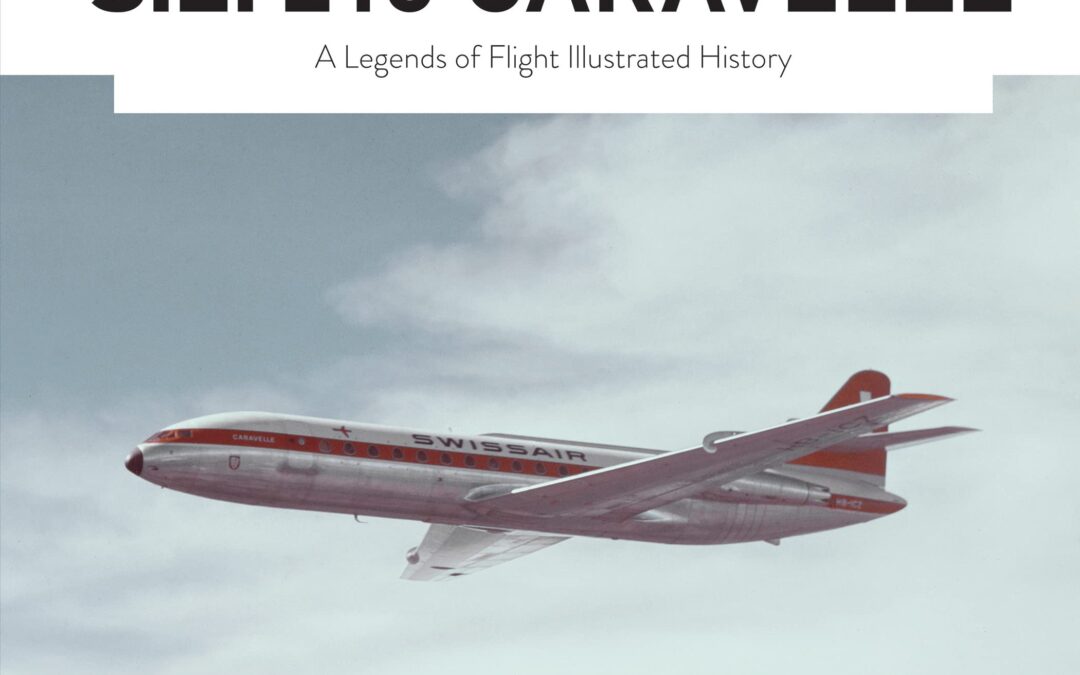
The Sud Aviation S.E. 210 Caravelle was a 1950s-era French-built jet airliner named after the famed 15th-century caravela ships used during the Age of Exploration. Along with the British de Havilland Comet, on which it was partially based, the Caravelle was one of the earliest jet-powered passenger airliners. In April 1959, it became the world’s first successful jet airliner to enter scheduled service, which it did with Scandinavian Air Lines System (SAS). The S.E. 210 remained in production until 1972 and eventually retired in 2005. With its unusual rear-mounted engines, it influenced such later jet airliner designs as the Douglas DC-9 and Tupolev Tu-134. The history of the Caravelle’s design, development, and operational use is presented in detail in this book, as is its use by many of the world’s most famous airlines of the era, including Air France, SAS, Swissair, Finnair, Royal Jordanian, Austrian Airlines (AUA), United, Indian Airlines, and VARIG. Technical specifications for the Caravelle and its variants, as well as period photographs, bring to life the fascinating history of this early, and influential, commercial jet airliner
